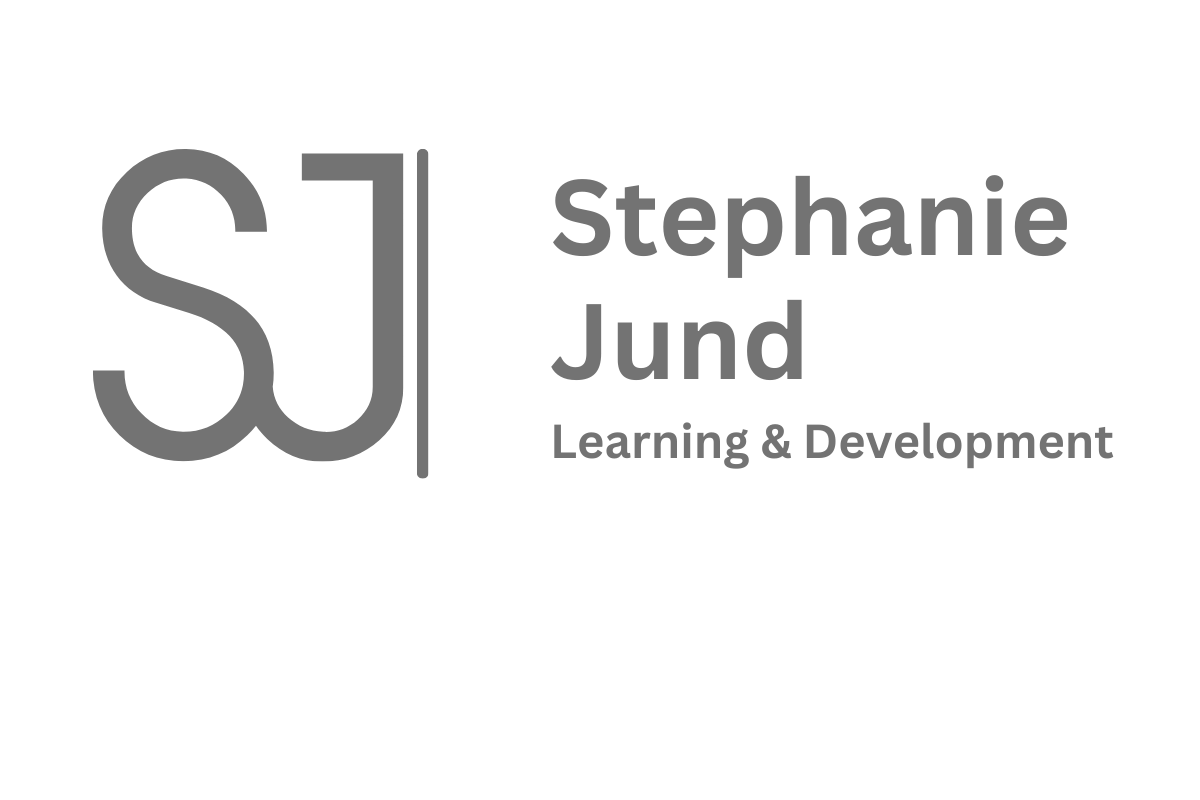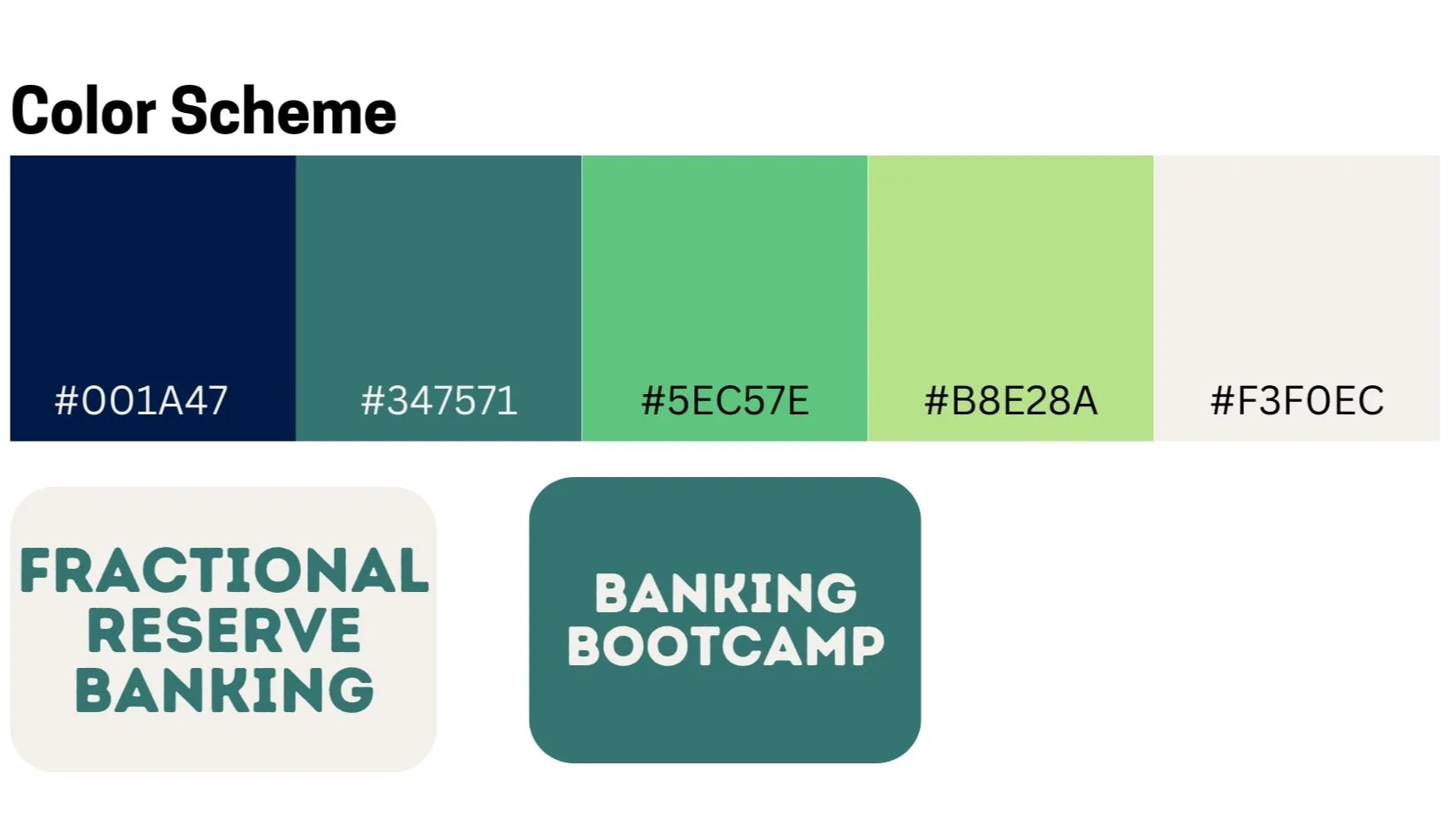Banking Bootcamp
Future teachers are faced with acquiring an enormous amount of content knowledge prior to certification, as well as learning how to design effective activities and lessons.
I designed an exciting module for adult learners in Northwestern University’s MSED program to quickly understand the process of Fractional Reserve Banking. This module is grounded in adult learning theory and makes logical use of the many interactive features offered by Articulate Storyline.
Overview
Target Audience: Graduate-Level Adult Learners in Northwestern University’s Master of Science in Education Program
Tools Used: Articulate Storyline 360, Canva, Adobe Illustrator
Challenge: Future teachers are faced with acquiring an enormous amount of content knowledge prior to certification, as well as learning how to design effective activities and lessons. I needed to design an effective and memorable way for learners to quickly understand the process of Fractional Reserve Banking.
Primary Objective: introduce a key concept in Macroeconomic monetary policy to future teachers, which will enable them to
implement newly acquired content knowledge in their future classroom
begin developing scenario-based learning activities for their future learners
Solution: The solution was to create a game-based learning scenario, which helped maintain high motivation in learners, giving them the opportunity to acquire knowledge and then practice their skills in a low-risk environment.
Action Mapping
As an instructional designer with a background in economics, I used myself as the SME (subject matter expert) to develop the action map and establish the how the user would demonstrate learning through a measurable goal.
I then identified actions required to help learners with expanding the economy through fractional reserve banking.
Adult Learning Theory
-
“Games satisfy one of our three innate psychological needs- namely, the need to experience competence, our ability to control and affect our environment, and to get better at it.” - Sebastian Deterding, game researcher and academic.
The banking bootcamp learner is provided with just that; the ability to feel as if they are the hero of a game. The learner first confronts an issue they must tackle. Specifically, they are provided with two imperfect options that both lead to failure.
The learner then acquires new knowledge (the Reserve Requirement) and then are given a renewed opportunity to tackle the issue, hence, “improving at the game”.
Ultimately, the learner walks away from the learning experience with a feeling of capability and clear evidence of growth.
-
In Design for How People Learn, (2nd ed.), Julie Dirksen suggests creating interesting dilemmas to foster a sense of urgency. She notes that “it’s much easier for learners to allocate attention if they can use what they are learning right away…we are wired to pay attention to urgent things “ (132).
The banking bootcamp learner is forced to contend with two imperfect options, creating an interesting dilemma of whether or not to extend a loan to our customer, Lilly.
Extending the loan could result in a potential profit, but runs the risk of a depositor being angry if money is not handled correctly.
The new material becomes instantly more “sticky” because the learner is forced to engage with an intreresting dilemma prior to learning about the solution.
-
Gain attention and simulate recall: The scenario first begins with a thought-provoking question that also stimulates recall: when banks loan, where does the money come from? The opening question forces learners to first examine their own prior knowledge about the banking system.
Provide guidance, elicit performance and provide feedback: Learners experience the content in a multiplicity of modalities such as reading, listening, calculating, and even drag-and-dropping.
Then, they are given the opportunity to practice their newfound knowledge. They are given “descriptive feedback” every time they give an incorrect answer, which provides the learner with guidance to help them improve their performance.
Enhance transfer: At the end, the learner then revisits the same dilemma (do I give Lilly a loan?) to reinforce the knowledge gained during the learning experience.
-
As learners mature, they move from focusing on subject-centeredness to problem-centeredness. While we cannot control the learner’s motivations, the applicability of a training should be eminently clear. Thus, adult learning is not just about knowledge building but should also contribute to problem-solving.
The banking boot camp provides the learner with a clear problem: do I extend the loan, and what is the optimal amount for the loan? Ultimately, scenario-based learning, rather than a knowledge dump, is an excellent way to teach problem-solving in a safe environment.
-
Psychologist Winston Sieck ran a series of studies that showed subjects had stronger confidence in their decisions when they explored the consequences of their decisions by writing about said consequences prior to making a choice. Exposition enhances one’s decision-making ability.
This is tied to Dirksen’s suggestion in Design for How People Learn (2nd ed.) when she suggests e-learning designers must avoid simply saying the learner is “incorrect”. Instead, e-learning experiences should include an illustration of the negative consequences of an incorrect decision, which forces the learner to engage more with the content.
I followed this strategy by forcing the learner to connect the dots themselves when the learner inevitably and incorrectly extends a loan to Lilly in the beginning of the module. The learner sees the consequence: an angry customer (Josh), who was unable to withdraw his deposit. The material instantly becomes more sticky because the learner is not simply told they are “incorrect”.
Text-Based Story Board
I framed the scenario as a new banker learning how to manage profitability vs risk when it comes to managing customer deposits.
Rather than simply telling the learner about the government set “reserve requirement”, which is used as a guide for managing profitability vs risk factors, I presented the learner with an element of gamification: they were presented with two imperfect choices. This element of desirable difficulty requires the learner to cognitively work with the concept at hand as they weigh two imperfect options, rather than being simply told the answer. This is an element of gamification, as the learner is given the opportunity to control their environment.
Selecting either option then prompts the learner to select the other, unchosen option. The scenario then reveals that both options are incorrect. This roadblock is only removed after the learner acquires knowledge regarding the government-set Reserve Requirement, which is a key concept to help learners understand how banking grows the economy. By the end of the learning experience, the learner is able to use the Reserve Requirement to solve the problem of “How to grow the economy while keeping customer deposits safe”.
Prototyping and Feedback
In developing this learning experience, I sampled it with two IT professionals who had good knowledge of computers but little background knowledge of the banking system.
Both showed confusion at the formative drag and drop assessment, and gave me feedback that the directions needed to be made more explicit. I applied this concept to the entirety of the learning experience, reminding myself of what Chip and Dan Heath state in Made To Stick- the “Curse of Knowledge” means sometimes instructors sometimes forget what it is like to experience something new for the first time!
Kirkpatrick’s Training Model of Evaluation
-
Multiple interactive opportunities were built into the course to ensure learners enjoyed the process and to ensure engagement with the content, i.e. scenarios, character storylines, drag and drops, and music.
-
Learners were given formative and summative assessments; there were multiple opportunities that provided learners with low-stakes but high-fun knowledge checks.
-
Implementation will take place with the graduate level learners during the Spring Quarter 2024 at Northwestern university.
During the post-implementation phase, learners will be tasked with discussion and an activity requiring them to design their own learning experiences that are also effective and “sticky”.
-
Graduate level learners will ideally have increased ability to design lessons that are engaging and effective.
After this e-learning course has been implemented, it will be possible to evaluate the extent to which performance levels have been affected.
Design
Tools used: Canva, Adobe Illustrator





